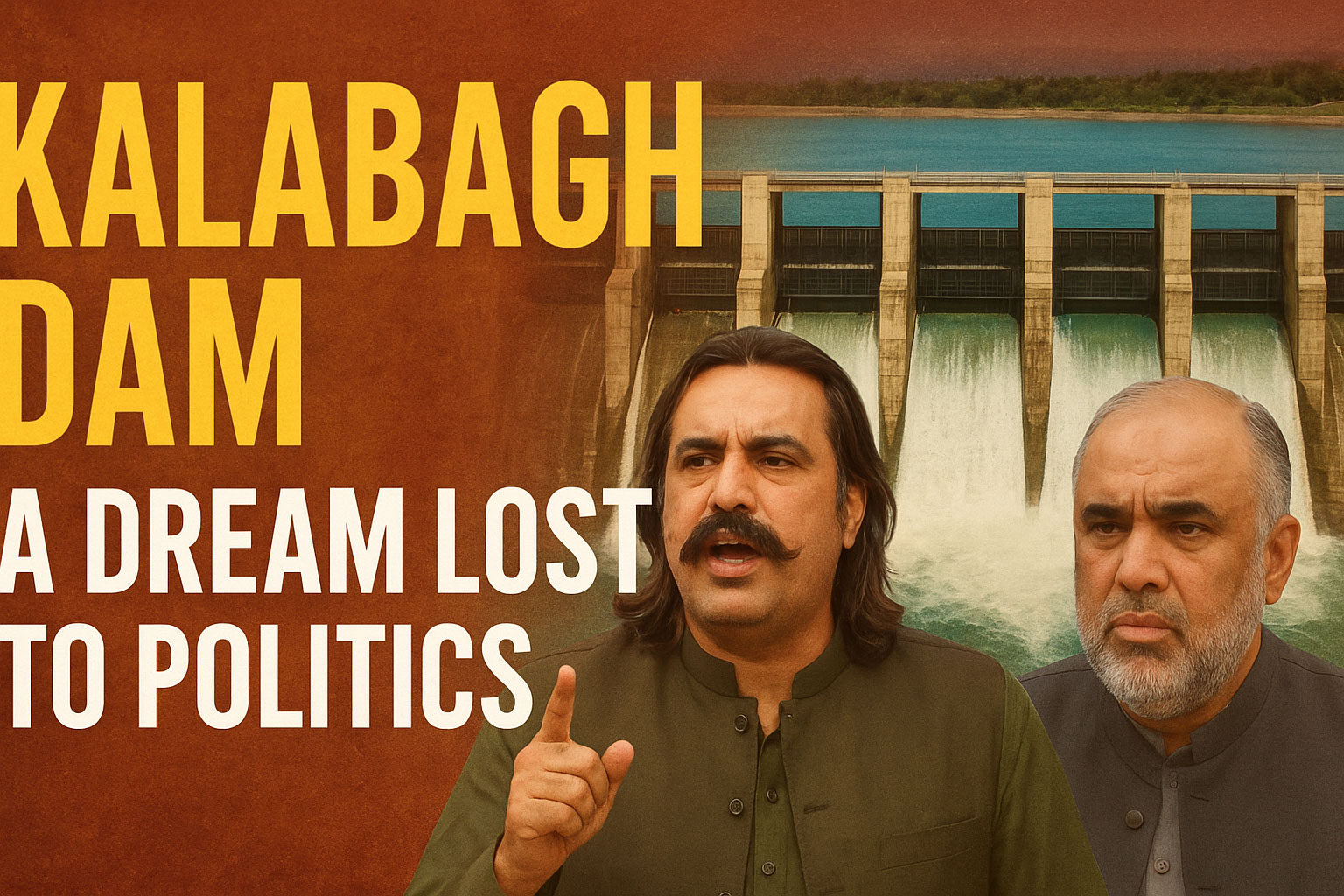The Chief Minister of Khyber Pakhtunkhwa, Ali Amin Gandapur, recently reignited debate by supporting the construction of the Kalabagh Dam, sending shockwaves across Pakistan’s political landscape. While the PML-N welcomed the statement with cautious optimism, the ANP and PPP once again opposed it, continuing their tradition of sacrificing national interest for political survival.
Before the echoes of Gandapur’s statement could settle, senior PTI leader and former Speaker of the National Assembly, Asad Qaiser, declared that Gandapur’s stance was his personal opinion, not the party’s official policy. In simple terms, PTI is against Kalabagh Dam, primarily to safeguard its vote bank in Khyber Pakhtunkhwa. This is not a new phenomenon—just a few months ago, PPP also took a U-turn on supporting irrigation canals for Thar’s barren lands after pressure from Sindhi nationalist groups. Once again, politics was prioritized over Pakistan’s future.
In reality, the Kalabagh Dam project could have become the backbone of Pakistan’s economy, agriculture, and energy sector. Yet, provincial differences and political egos turned it into nothing more than an unfulfilled dream. For over half a century, Pakistan has suffered from water shortages, rising electricity costs, and devastating floods, but the Kalabagh Dam never moved beyond political speeches and paper files.
Had the Kalabagh Dam been built, Pakistan would have gained 3,600 megawatts of cheap hydropower, irrigated millions of acres of farmland, controlled floods, and boosted agricultural prosperity. Instead, it became a victim of provincial mistrust:
- KPK fears Nowshera will sink.
- Sindh fears its water will be stolen.
- Balochistan claims it never benefitted from previous dams, so why support this one?
- Punjab is accused of reaping all the benefits.
The result? A project that could have symbolized national unity turned into a showcase of provincial division.
Even worse, politicians have exploited the Kalabagh Dam as political fuel. Gandapur and Qaiser contradict each other, while PML-Q’s Moonis Elahi occasionally tweets in its support. Ironically, his father, former CM Punjab Chaudhry Pervaiz Elahi, stopped allocating funds for the dam’s construction in the 2021 budget, ending a 45-year practice.
No one has seriously acknowledged the undeniable truth: without water, there is no agriculture; without agriculture, no economy; and without an economy, Pakistan cannot stand. Yet, every year, billions of rupees worth of floodwater is wasted, unutilized for storage or irrigation. This negligence has pushed Pakistan among the top 10 most water-stressed countries in the world.
It is tragic that the Kalabagh Dam, instead of being built for the nation, was reduced to a battleground for political egos and provincial prejudice. The harsh reality is that Pakistan is simultaneously drowning in floods and running dry underground.
The Way Forward
Nations around the world achieve progress by taking bold, consensus-based decisions. If Pakistan’s provinces can sit together, address each other’s concerns, and prioritize the national interest, the Kalabagh Dam can still be built. The real enemy is not external—it lies within: our division, mistrust, and selfish politics.
The truth is clear: Kalabagh Dam is not just Punjab’s issue—it is Pakistan’s survival issue. If we fail to act now, future generations will not forgive us. They will ask:
“When you had the chance, why didn’t you save water for us? Why did you leave us to die in drought?”



